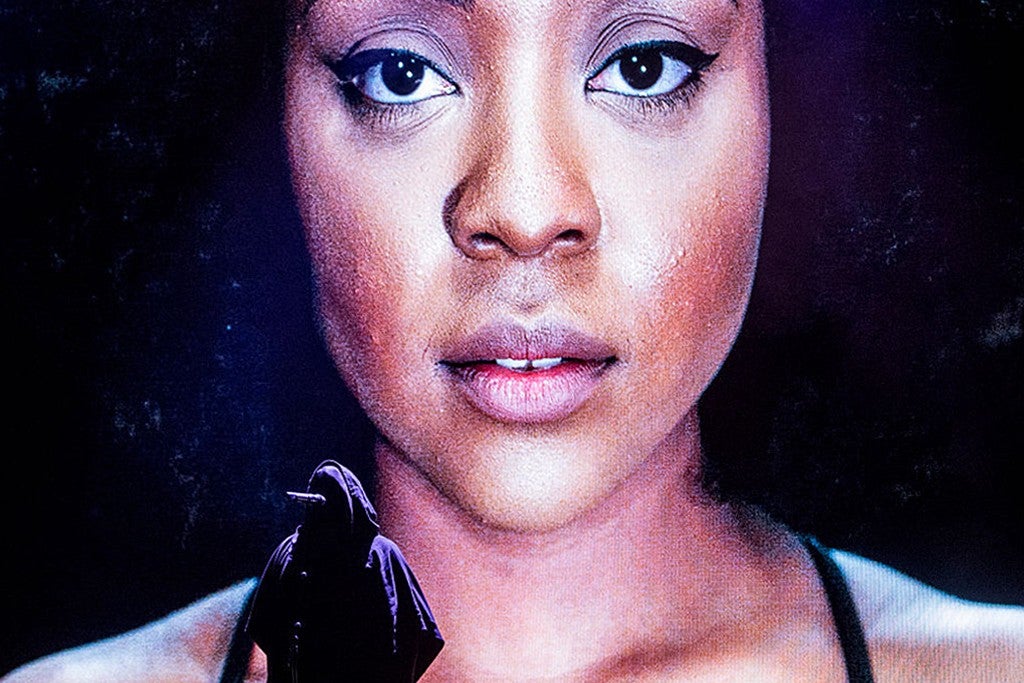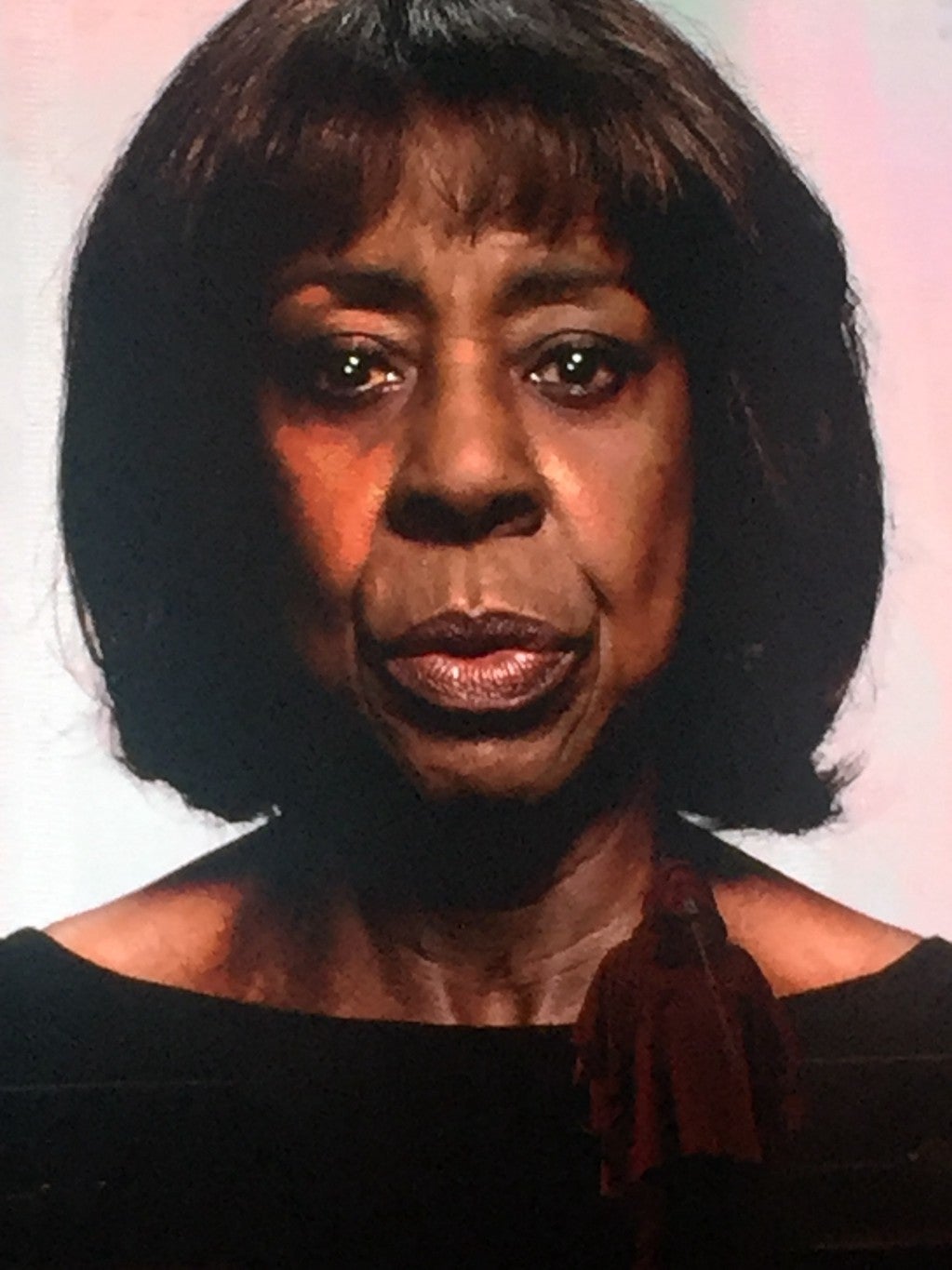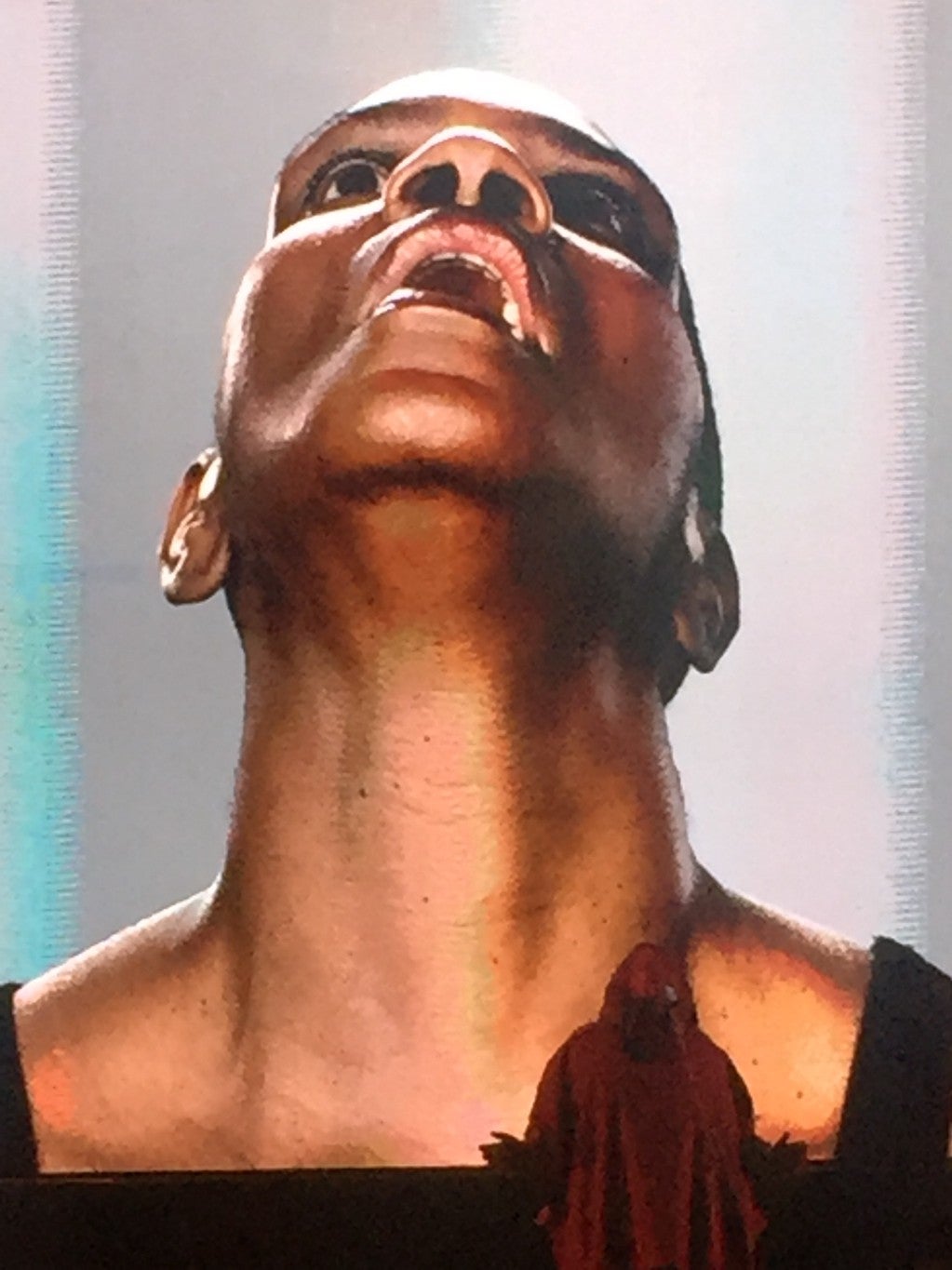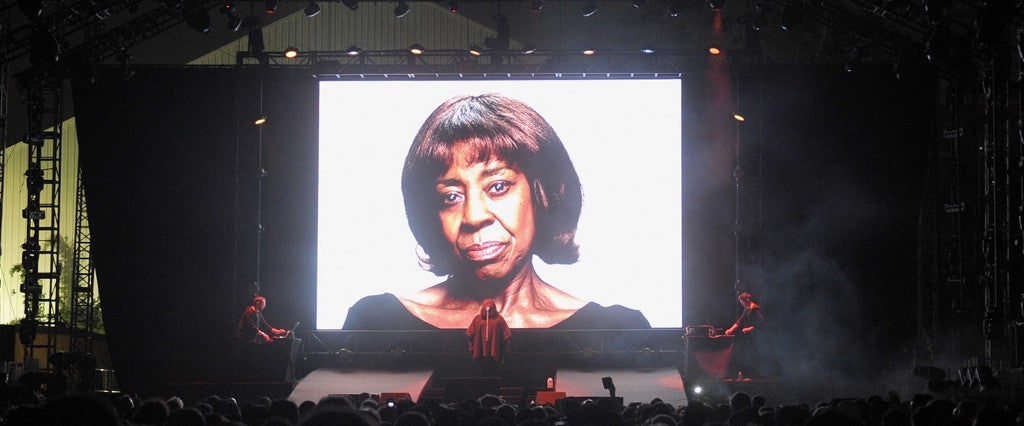Naomi Campbell is caressing herself while writhing sensuously on a large screen at the Lawn stage at FYF Fest. Despite my usual alarm at seeing zero other black people within my 20-foot radius, I’m comforted by the supermodel’s presence. In my cosmology, Naomi symbolizes, “black beauty valued here,” and this is a friendly idea, so the drones that hum in the background fail to register. This eerie juxtaposition is quintessential Anohni — strange, isolating, thought-provoking, and gorgeous, all at once. But for all my willingness to be intellectually provoked, I’ll soon learn that my sense of comfort and inclusion is an illusion.
Anohni’s album Hopelessness has been hailed as a pop-cultural high mark for the year, and perhaps the century. Musically, it is slick and swarming, with crisp production by Hudson Mohawke and Oneohtrix Point Never supporting Anohni’s orotund tremolo. The sounds are inviting, then magnetic, then invasive. It makes for fine dance music, and given the lyrical content’s concern with government surveillance, climate change and the destruction of late-stage capitalism, even better protest music — a combination she’s declared the ultimate Trojan Horse.
In “Drone Bomb Me” she takes on the persona of a 9-year-old girl who has seen her family killed and pleads to be killed, too: “Blow my head off/explode my crystal guts/lay my purple on the grass.” In “Obama,” she criticizes the outgoing president’s failure to live up to hopefulness of his campaign, “We thought we had empowered/ the truth-telling envoy/ Now the news is you are spying/executing without trial.” For the risks Anohni has taken, she has been rewarded with overwhelming critical acclaim, singled out as a progressive musical vanguard. The Guardian heralded the album as “the most profound protest record in decades,” calling the effect of the music, despite its graphic lyricism, “strangely empowering.” Pitchfork said, “it would be hard to find a more capable figure to lead us into a woke pop polemic.” (More to come on who “us” includes.)
Surely, the lyrics in Hopelessness are not the only element of Anohni’s celebrated courage: This is the first album she has released as Anohni, taking on a feminization of her previous moniker Antony (previously of indie band Antony and the Johnsons) as part of her transition. Her progressive politics, alongside her move to bring her experience as a trans woman into greater focus, have made Hopelessness more than just an album release — its reception has had the energy of a movement.

This summer, Anohni has taken that movement on tour. The stage show presentation of Hopelessness adds even more complicated text to Anohni’s rich body of polemic via essay, recording, performance and protest action. Simple, haunting and direct, the performance is visually sparing: For the majority of the set, two producers flank Anohni, who is obscured by a large jedi-like robe. She practices a sort of ego erasure, similar to Sia, while onstage. In an interview with Emilie Friedlander for Thump, Vice’s electronic music vertical, she said, “I’ve never been that interested in my physical body as a convincing visual conduit for my voice… So to me, it’s been separating my voice from my body in a way. That was my idea: that I would be annihilated.”
Taking the place of her visage is a video of 21 women mouthing the lyrics to her songs. “I was thinking about aspirational bodies, and working with different models to find a body that, in some ways, could more powerfully represent the material than I could,” she explains the decision to Thump. These bodies include performance artists Joanna Constantine and Kembra Pfaler, who have previously appeared in Anohni’s videos (and who, like Anohni, are white) — but they are far from representative of the cast, which is overwhelmingly women of color, and more than half black women, in particular. We are called in to do the dirty work of delivering the bad news about the state of the world. We are called in to make the audience question their comfort and worldview.

”I know you love me / ’Cause you’re always watching me,” mouth the models featured in the video for the third song in the set, “Watch Me,” a cheeky, eroticized track about government surveillance, which takes on a particular metamorphosis when lip-synched by black women. The women look directly at the camera. They are playful, erotic, seductive. Despite the irony of the lyrics, they do not betray any hint of being the wiser. Instead, true to the narrative voice in the song, they enjoy the paternalism. Cooing, “Daddy, daddy,” they invite surveillance while they watch pornography, travel or communicate on the internet, relishing the protection of a hypervigilant paternal figure. It’s a complicated poetic setup that registers as disturbing on the album, but becomes especially troubling during the performance, especially for a black female viewer.
While I’d previously been anonymous, random and rare in the artsy, millennial, overwhelmingly white crowd, with the rollout of this imagery, I’m now unexpectedly involved: represented and representative. Now my applause and desire to dance no longer stand on their own. Now I feel responsible for making a somewhat public addendum on behalf of black women about the lyrics and issues at hand, and whether we consent to having our image used in this way. I feel as though I’m the only black kid in class and nobody thought to warn me that we’d be discussing the Civil Rights Movement.
Perhaps Anohni’s coupling of thoughtfulness and awkward desire to dance are working overtime on me. I’m swaying and wondering who invited her to sit at the black table, and whether I overlooked the album review in Essence. I’m praying that there is no confusion about the tongue-in-cheek persona of the narrator, but I fear that some in the audience are receiving fuzzy messaging, taking the invitation and sexuality wholesale. What is originally a story about government paternalism becomes a story about racial paternalism, a story about the over-surveillance of black women, with the suggestion that black women enjoy this sort of treatment from “Daddy,” reminiscent of the myth that Sally Hemings and Thomas Jefferson were in love.
There’s a fine line between inclusion and appropriation, but here’s what tips the scale in this situation: audience. When Pitchfork writes about leading “us” to the aforementioned “woke pop polemic,” who is that us? Surely nobody imagines that Anohni will be taking Queen Bey’s spot as woke pop priestess. Anohni must know that “us” does not include a large percentage of black listeners; nor do her lyrics, with their harsh exactitude, make any mention of the particular hue of black feminine plight. Aware as she is, Anohni has given some good thought to how presenting women of color as “mouthpieces” and visual vehicles might affect interpretation of her message. “It’s so influenced by the popular perception of different kinds of people and identities,” she told Thump. “[Like the way you] perceive someone more beautiful or someone younger, someone older, someone of trans experience, someone of color — how does that shift the resonance of the song? It’s also a conversation about, who do we trust? And who do we raise up? Who has more moral authority? Whose voice?”
These were concerns when she featured one of the most well-known and controversial black supermodels in the video for “Drone Bomb Me.” Less obvious than the Campbell collaboration is the cover artwork for Hopelessness, which features a composite of Anohni’s face and that of Liya Kebede, a supermodel from Ethiopia. With the popularity of face-composite apps, it might be difficult to understand that for what it is: blackface. But in a time of fiery online conversation about appropriation in pop culture and the use of black women as accessories for a white artist’s vision, there should be little confusion about what it means or provokes when a white artist depends on the moral authority of black femininity to endorse her message of radical politics. But Anohni’s actions have received little scrutiny; she has been protected by the shield of wokeness and her own politicized identity.


While Anohni succeeds in annihilating the self, she makes others hyper-visible. That is a shallow sense of alliance. If Anohni means to advocate for power and representation of black femininity, she should, at least, speak directly to our experience. We have several centuries of cultural practice turning the most hopeless circumstances into fodder for music, art and dance. We too have practiced Trojan Horse politics, as a matter of safety and necessity.
Anohni’s practice and persona depends on black femininity, and it’s time she hold her “woke” self more accountable. Otherwise, there is nothing revolutionary about using black femininity as a vehicle for communication, especially the sort of communication that encourages people to dance through hopelessness. Otherwise, we’re only pawns in her show.
